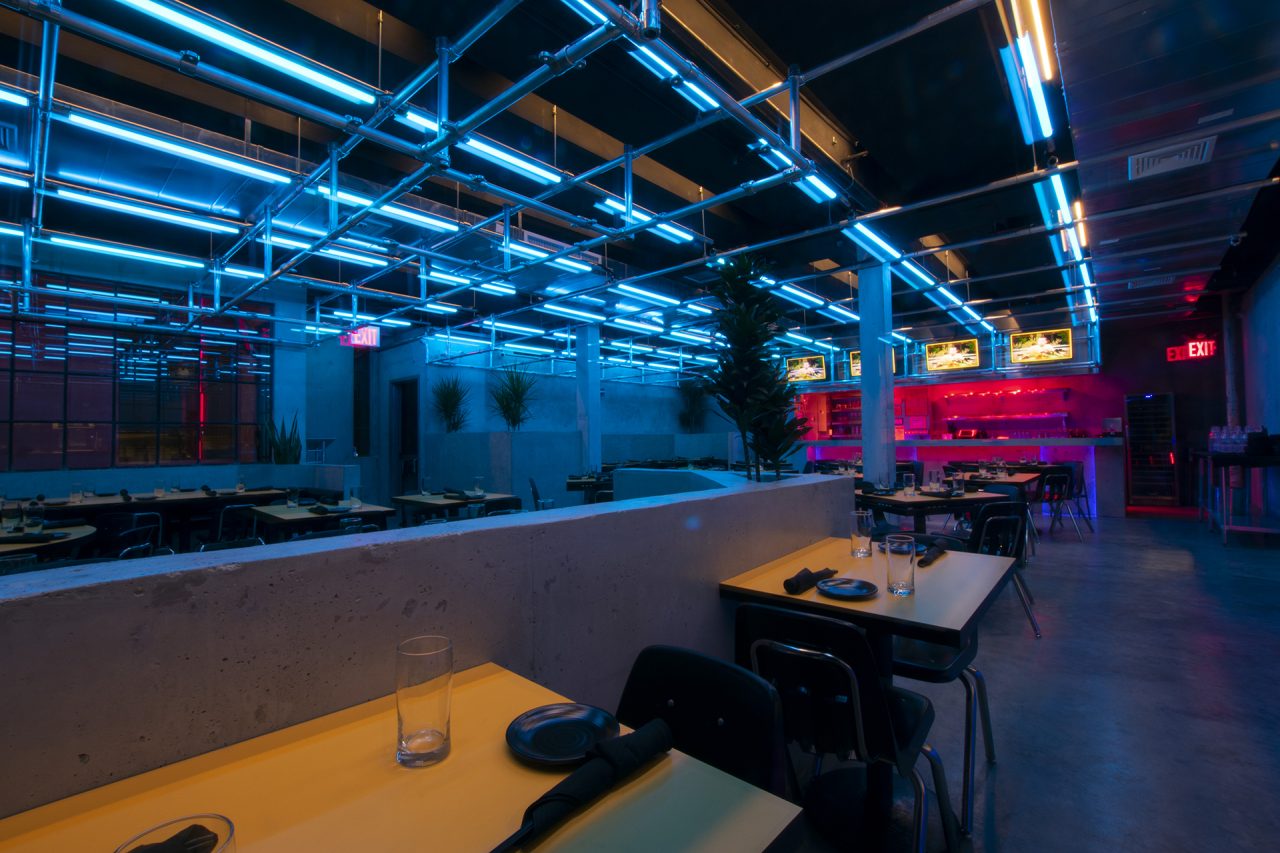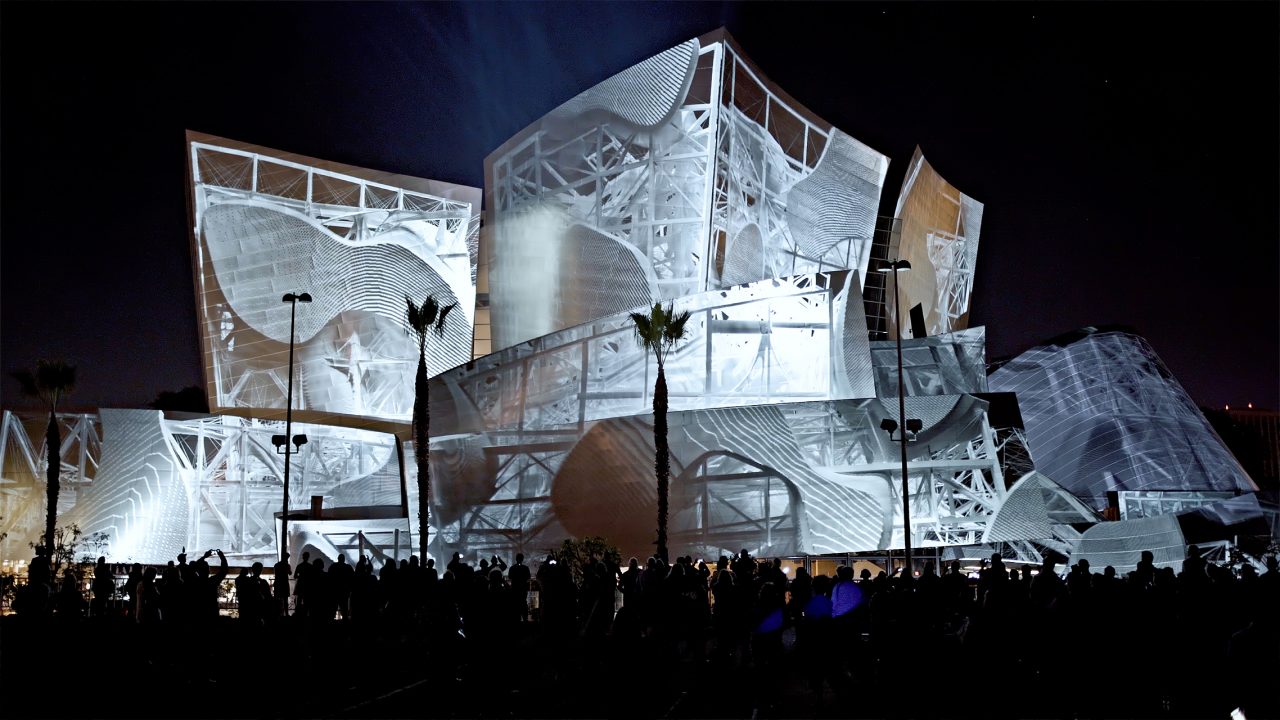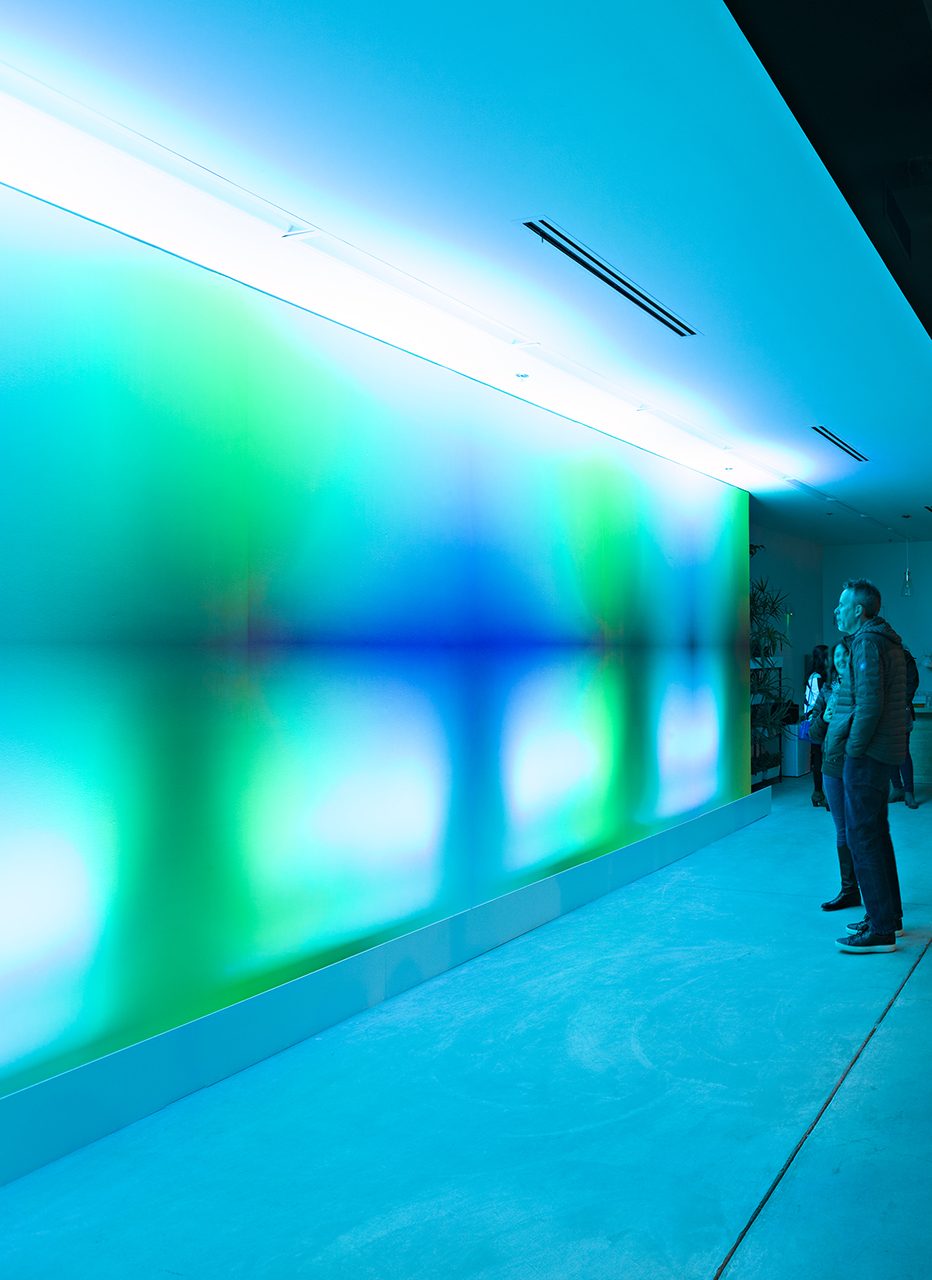Light has long been one of architecture’s central fascinations: Alvar Aalto’s attempts to maximize and simulate natural light, Álvaro Siza Vieira’s quiet structures that are, as the 1992 Pritzker Prize jury described them, “molded by light,” and Tadao Ando’s iconic Church of the Light, which carves light out of solid walls, all number among the myriad examples of how architecture utilizes sunlight as a spatial medium.
However, as much as natural light has had a central role in architecture, so too has artificial light—be it incandescent bulb, fluorescent tubes, or, increasingly, LED. A new class of architects, artists, and designers is now embracing artificiality. We gathered three exciting examples of artists who are leveraging the newest lighting and projection technology to highlight built structures by Frank Gehry and Renzo Piano, among others, and create entirely new environments where light is as much a material as the walls they illuminate.

Nitemind, the Bushwick-based brainchild of Michael Potvin, is perhaps best known for their complex visuals at warehouse raves and music events like the upstate techno party Sustain-Release. Many of these displays are themselves architectural: a rapid-paced light and smoke show at a Helena Hauff–headlined after-hours warehouse party might use the medium to make a seemingly solid plane or roof appear overhead in the otherwise cavernous space, parceled out with billowing black curtains. They’ve also created less physically anchored visuals for the tours of artists like Mitski and Kelela.
Nitemind has also adapted its skills to installations—such as an installation and “dining environment” for the release of Comme des Garçons’ CONCRETE perfume launch. They’re also known for the grid of color-shifting lights and The Matrix–inspired mirrors at the Bushwick outpost of the restaurant Mission Chinese Food and the lighting at now-legendary Brooklyn techno haunt Bossa Nova Civic Club. However, even in these more traditional spaces, a sense of theatre and dynamism pervades, and Potvin says he tries to work closely with architects and designers to help create environments where the lighting is integral to the experience of the space, such as creating custom seating to embed LED strips in a soon-to-open experimental music venue. Since he can’t be there 24/7, where people can pick up where he’s left off, he has designed controls so that “anyone can come in and achieve their dream,” as he put it. “That’s a thing that has become really interesting to me—creating these systems that people can play with.”

Refik Anadol is a Los Angeles–based media artist whose video installations meld images, architecture, and technology.
Anadol was a resident with Google’s Artists and Machine Intelligence program, and his work, which has been exhibited, installed, and shown on buildings like L.A.’s Metropolis Towers; an Amsterdam, Netherlands shopping center; and various buildings in Istanbul, Turkey often reconfigures the latent, invisible connections always already lurking in data.
He most recently illuminated the facade of the Frank Gehry–designed Walt Disney Concert Hall with WDCH Dreams, a massive projection piece that launched on the advent of the Los Angeles Philharmonic’s centennial. Using the raw data of the Philharmonic’s 45-terabyte archives, including audio recordings and historic images, an array of visuals cast by 42 projectors stream across the building’s equally data-driven, parametrically-designed facade. The projection harkens back to an earlier multimedia project in architecture: the 1958 pavilion by Le Corbusier in Brussels, Belgium, which was commissioned by the electronics company Philips. This installation was completed in collaboration with experimental composer Iannis Xenakis, and is a reference that Anadol has cited on other projects.
Other algorithmic and machine-learning projects—such as Archive Dreaming, an installation exhibited in both Istanbul and San Francisco—used both light and data as material applied to the canvas of a custom architectural space.
Anadol’s work—in equal measures revelatory and mystifying—exposes the connections of our ever-expanding collections of data and the ways in which buildings and computations are always already performative.

Luftwerk is the collaboration of Chicago-based artists Petra Bachmaier and Sean Gallero. They take up light and color as their medium, creating installations and interventions that challenge perception and architectural convention. They’ve worked on sites by iconic architects such as Renzo Piano and Frank Lloyd Wright and are gearing up for a two-part Mies van der Rohe intervention titled Geometry of Light. Along with architect Iker Gil of MAS Studio and sound artist Oriol Tarragó, Luftwerk installed Geometry at Mies van der Rohe and Lilly Reich’s 1929 Barcelona Pavilion in February as part of the Festival Llum BCN and the Festival of Santa Eulàlia, and will bring the project to Mies van der Rohe’s Farnsworth House in Plano, Illinois, during the 2019 Chicago Architecture Biennial.
Other installations have included White Wanderer, an array of iceberg-like mirrors made in collaboration with the Natural Resource Defense Council, displayed in two iterations in Chicago, and Linear Sky, the Dan Flavin–esque hallway of lights at the 21c Museum Hotel in Kansas City, Missouri.
The artist duo have lit up spaces outdoors too, with projects like Luminous Field, which reimagined Chicago’s Millennium Park and Anish Kapoor’s Cloud Gate (popularly known as The Bean), with an array of projections beamed from a crane above—a prime example of how they define their practice: “draw[ing] from the surrounding environment to interpret and expand on the site,” all with an attention to the people who occupy these spaces.
